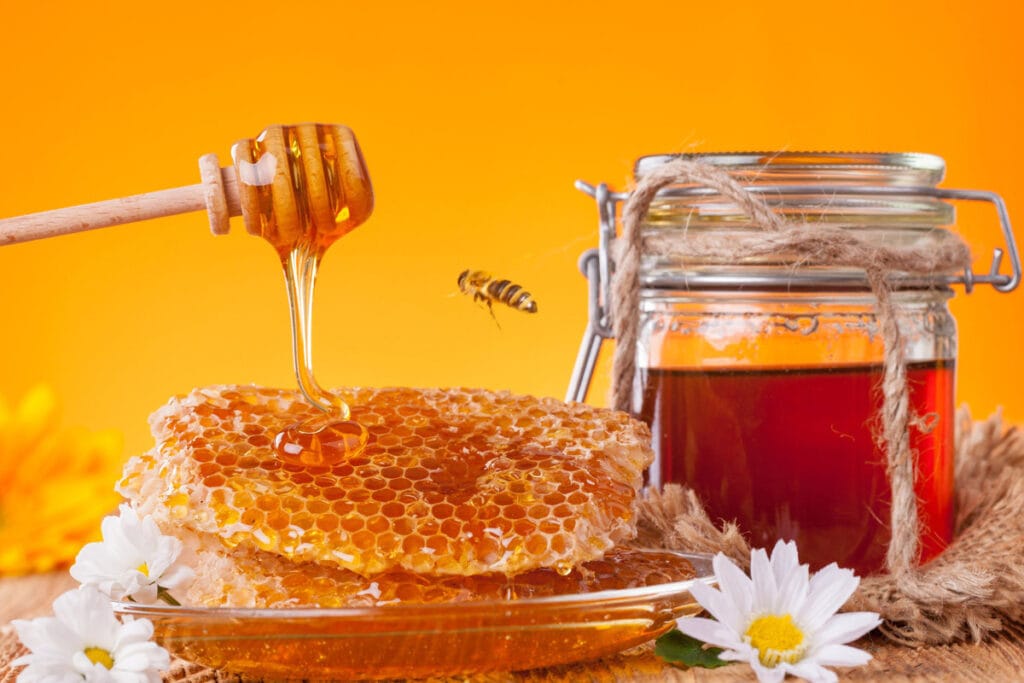
Honey Flavor Profiles
We all enjoy the experience of sweet honey whether it is incorporated in food, used to sweeten tea or having it drizzled in yogurt. But honey is far more than a sweetener and its flavors vary from the different kinds of nectar collected. That’s right! Honey has more than one flavor profile and in this blog, we explore the different flavor profiles of Honey, uncovering the factors that influence them and offering insights into how you can appreciate and utilize these flavors.

1. The Basics of Honey Production
Before diving into the flavors, it’s important to understand how honey is made. Bees collect nectar from flowering plants and trees and bring it back to the hive. Enzymes in their saliva break down the sugars in the nectar, and through a process of evaporation and further enzyme activity, the nectar transforms into honey. The variety of flowers the bees visit significantly impacts the flavor of the honey.
2. Factors Influencing Honey Flavor
Source of Nectar: Different flowers produce nectar with distinct flavors. For instance, clover nectar is typically mild and sweet, while buckwheat nectar has a robust, molasses-like flavor.
Geographic Location: The region where the nectar is collected can affect flavor due to the local flora and climate conditions.
Processing Method: Raw, unfiltered honey retains more of its natural flavors compared to processed honey, which may be filtered.

3. Common Honey Varieties and Their Flavor Profiles
Clover Honey
Flavor Profile: Mild, light, and floral.
Description: Clover honey is one of the most popular and widely available types. Its subtle sweetness and delicate floral notes make it a versatile choice for sweetening a variety of foods and beverages.
Manuka Honey
Flavor Profile: Rich, earthy, and slightly medicinal.
Description: Produced in New Zealand from the nectar of the Manuka bush, this honey is known for its distinctive flavor and strong antibacterial properties. Its complex taste often includes hints of caramel and a unique earthy undertone.
Buckwheat Honey
Flavor Profile: Bold, robust, and malty.
Description: Dark and rich, buckwheat honey has a strong, distinctive flavor with notes of molasses and an almost woody quality. It’s perfect for those who enjoy a more intense honey experience.
Acacia Honey
Flavor Profile: Light, mild, and very sweet.
Description: Made from the nectar of the acacia tree, this honey is pale in color and has a gentle, almost vanilla-like sweetness. It’s an excellent choice for those who prefer a subtle flavor that doesn’t overpower other ingredients.
Orange Blossom Honey
Flavor Profile: Citrusy, sweet, and slightly fruity.
Description: Derived from the blossoms of orange trees, this honey has a pleasant citrus aroma and flavor, with a hint of fruitiness. It’s ideal for adding a fresh, bright touch to baked goods and desserts.
Eucalyptus Honey
Flavor Profile: Herbal, slightly mentholated, and aromatic.
Description: This honey comes from the nectar of eucalyptus trees. Its flavor profile can be somewhat medicinal with notes of menthol or eucalyptus, making it a unique addition to savory dishes and teas.
Heather Honey
Flavor Profile: Complex, floral, and somewhat tangy.
Description: Heather honey is known for its dark color and strong, complex flavor. It has a distinct floral taste with hints of spice and tang, making it a favorite for those who enjoy a more sophisticated honey.

4. Storing and Tasting Honey
To best preserve honey’s flavor, store it in a cool, dry place away from direct sunlight. Honey can crystallize over time, but this doesn’t affect its quality. Simply warm it gently to return it to a liquid state.